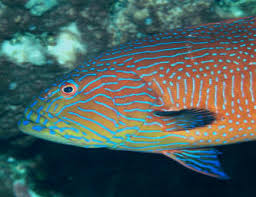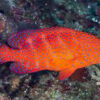The Dragon in Chinese Mythology: The Transition Between Worlds

In Chinese mythology, the dragon is an essential and powerful symbol, playing an intricate role in stories of transformation, transcendence, and the crossing between different realms or worlds. These mythical creatures are often seen as gatekeepers, mediators, and symbols of both creation and destruction. Through various legends and folklore, the dragon represents the connection between the earthly realm and the celestial, as well as the bridge between the living and the spiritual world. The dragon’s involvement in such stories reflects the Chinese worldview of a cosmos in constant flux, where boundaries between different realms are fluid and ever-changing.
The Nature of Chinese Dragons
Before delving into the specific myths and stories, it’s important to understand the nature of the Chinese dragon. Unlike Western dragons, which are often depicted as fearsome, fire-breathing monsters, Chinese dragons are benevolent, revered beings that embody both power and grace. The Chinese dragon is typically portrayed as a long, serpentine creature with the antlers of a deer, the head of a camel, the eyes of a rabbit, the ears of a cow, the neck of a snake, the belly of a clam, the paws of a tiger, and the claws of an eagle. Its body is covered with scales, and it has the ability to fly and swim, representing the union of the elements of air, water, and earth.
Chinese dragons are often connected to water and weather, controlling the rain, rivers, and seas. They are also closely tied to the celestial realm, frequently symbolizing the emperor’s power and the divine order. However, beyond these roles, dragons are also pivotal in stories about transitions between worlds, whether it be the crossing between the mortal and immortal realms, the physical and spiritual, or the human and divine worlds.
The Dragon as a Gatekeeper Between Realms
One of the most important roles of the dragon in Chinese mythology is its function as a gatekeeper between different realms or worlds. In several myths, dragons serve as the threshold guardians, allowing or prohibiting access to otherworldly places, and they are often associated with the idea of transformation. A perfect example of this role is found in the tale of the Eight Immortals and their adventures.
In one popular legend, the Eight Immortals, a group of legendary Taoist sages, are known to cross the boundaries between different realms in their pursuit of immortality. In some versions of the myth, the dragon is responsible for guiding or blocking their path as they venture through realms. The dragons are seen as protectors of these sacred realms, and in some cases, they help facilitate the transition between mortal existence and a higher, divine plane.
The concept of transcendence is vital in Chinese thought, and dragons are frequently associated with this theme. They are often portrayed as agents of change, helping heroes or deities ascend from the human world to the heavens. In Taoist philosophy, for instance, the dragon symbolizes spiritual transformation, where a person undergoes an inner transformation to achieve immortality or become one with the Tao. This transformation is often depicted through mythical stories in which a person or being must overcome various trials, assisted by dragons, to access higher knowledge and achieve transcendence.
The Dragon and the Creation Myth
In Chinese creation myths, dragons are often seen as primordial beings responsible for shaping the world. One of the most famous creation myths involves the great dragon Pan Gu. According to the myth, the universe began as a formless void, where chaos reigned. Pan Gu, a giant dragon-like being, emerged from this chaos and separated the heavens and the earth, establishing order in the cosmos. As Pan Gu grew, so did the separation between the heavens and earth. His efforts marked the transition from the chaotic, unformed world into a world where distinctions between the physical and spiritual were clear.
In this myth, Pan Gu’s role as a dragon-like figure is symbolic of the process of creation, and his actions illustrate the concept of movement from one world to another—an ongoing shift between chaos and order, darkness and light. The cosmic transition that Pan Gu initiated represents the cyclical nature of life, death, and rebirth, themes that are deeply embedded in Chinese philosophical and religious traditions.
The Dragon and the Underworld
In some Chinese myths, dragons are also associated with the underworld or the realm of spirits. In the tale of Chang’e, the Moon Goddess, a dragon is sometimes portrayed as a guide to the underworld. This mythical connection between dragons and the underworld symbolizes the idea of a journey between life and death, where dragons act as intermediaries, leading souls to their final resting places.
In these myths, dragons help facilitate the journey between worlds, guiding those who pass from the mortal realm into the afterlife. The symbolism of the dragon in this context is multifaceted: it represents not only the passage between physical death and spiritual rebirth but also the cyclical nature of existence, where death is merely a transition to another state of being. The dragon’s power over both life and death reinforces its association with change and transformation.
The Dragon in the Legend of the Dragon Gate
One of the most famous myths involving dragons and the transition between worlds is the Dragon Gate Legend. This ancient myth tells the story of a carp that swam up the Yellow River, determined to leap over a waterfall to reach the Dragon Gate. According to the legend, any carp that succeeded in leaping over the waterfall would be transformed into a dragon, symbolizing a profound metamorphosis. This myth encapsulates the idea of personal transformation and transcendence, as well as the belief in the possibility of transcending one’s earthly limitations to achieve greatness.
The Dragon Gate is often depicted as the ultimate challenge or obstacle in a person’s journey to greatness or enlightenment. Just as the carp must ascend the waterfall to become a dragon, individuals must overcome difficulties and trials to reach a higher state of being or spiritual elevation. In this way, the dragon serves as a powerful symbol of the ultimate reward for those who strive toward self-improvement and spiritual growth.
Dragons and the Cosmic Order
Chinese cosmology, which emphasizes harmony between heaven, earth, and humanity, often invokes the dragon as a central figure in stories about the maintenance of cosmic balance. In many myths, the dragon is portrayed as a cosmic agent who ensures the proper functioning of the universe. The dragon’s role as an intermediary between the mortal realm and the heavens reflects the Chinese understanding of the universe as a dynamic system of forces that must remain in balance for peace and prosperity to prevail.
In the myth of Hou Yi, the archer who shot down nine of the ten suns, the dragon plays a subtle yet important role in the narrative. Hou Yi’s actions represent a transition between worlds—the world of chaos and the world of order. In the context of this myth, the dragon can be seen as a symbol of the cosmic forces that govern the balance of nature, stepping in when necessary to restore order and harmony. The role of the dragon in these types of stories reinforces the idea of transition and the movement between worlds, which is a central theme in Chinese mythology.
Conclusion: The Dragon as a Symbol of Transition
The dragon in Chinese mythology is more than just a mythical creature; it is a symbol of change, transition, and transformation. From its role as a mediator between realms and its connection to cosmic balance, the dragon is a powerful figure that facilitates the passage from one world to another. Whether as a guardian of the heavens, a guide to the underworld, or a force of creation and destruction, the dragon symbolizes the fluidity of existence and the interconnectedness of all realms.
Throughout Chinese mythology, the dragon is not only an agent of transition but also a symbol of the potential for transformation. The idea of crossing from one world to another—whether it be from the mortal to the immortal, the physical to the spiritual, or from life to death—is central to many Chinese myths. These stories reflect a worldview in which change and transformation are constant, and the dragon serves as both a guide and a symbol of the immense potential for growth and transcendence.
Ultimately, the dragon represents the dynamic forces that govern the universe, reminding us that transformation is not only possible but inevitable. As a mythical creature, the dragon’s role in Chinese mythology offers insight into the spiritual and philosophical beliefs of the culture, highlighting the importance of navigating life’s challenges and embracing the continuous transitions between worlds.

